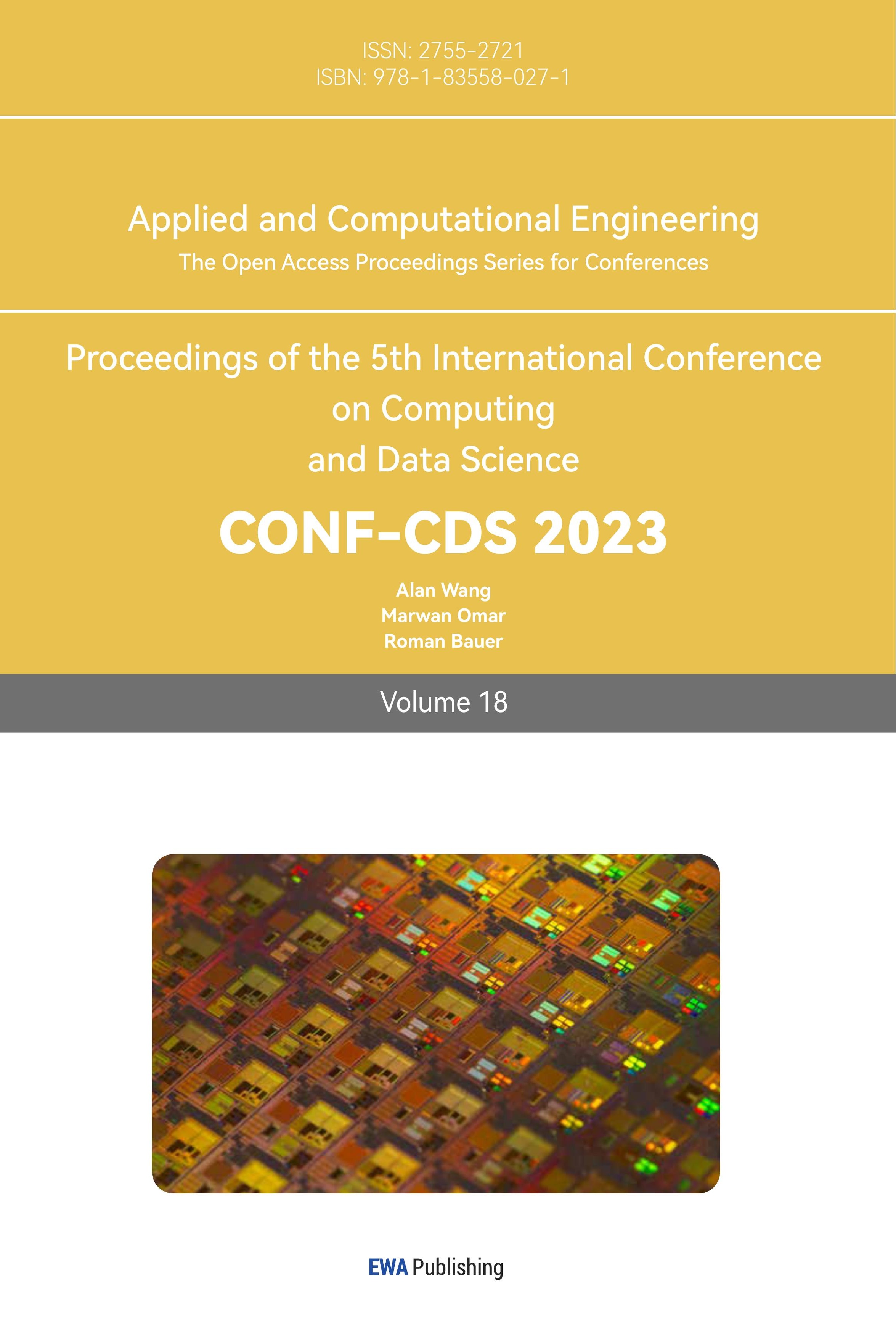References
[1]. CN healthcare 2022 https://www.cn-healthcare.com/articlewm/20221104/content-1461272.html
[2]. He K Gkioxari G Dollar P et al. 2017 Mask r-cnn Proceedings of the IEEE international conference on computer vision 2961-2969
[3]. Yu oYang Y Lin Z et al. 2020 Improved denoising autoencoder for maritime image denoising and semantic segmentation of UsV China Communications 17(3): 46-57
[4]. Yuan F Zhang Z Fang Z 2023 An effective CNN and Transformer complementary network for medical image segmentation Pattern Recognition 136: 109228
[5]. Maaz M shaker A Cholakkal H et al. 2023 Edgenext: efficiently amalgamated cnn-transformer architecture for mobile vision applications Computer Vision-ECCV 2022 workshops: Tel Aviv Israel Proceedings Part VII Cham: springer Nature switzerland 2023 3-20
[6]. Liu J Liu Y Li D et al. 2023 DsDCLA: Driving style detection via hybrid CNN-LsTM with multi- level attention fusion Applied Intelligence 1-18
[7]. Chen J Chen x Chen s et al. 2023 shape-Former: Bridging CNN and Transformer via shapeConv for multimodal image matching Information Fusion 91: 445-457
[8]. LaValley M P 2008 Logistic regression Circulation 117(18): 2395-2399
[9]. Myles A J Feudale R N Liu Y et al. 2004 An introduction to decision tree modeling Journal of Chemometrics: A Journal of the Chemometrics society 18(6): 275-285
[10]. Biau G scornet E 2016 A random forest guided tour Test 25: 197-227
[11]. Feurer M Eggensperger K Falkner s et al. 2022 Auto-sklearn 2.0: Hands-free automl via meta- learning The Journal of Machine Learning Research 23(1): 11936-11996
[12]. Komer B Bergstra J Eliasmith C 2014 Hyperopt-sklearn: automatic hyperparameter configuration for scikit-learn ICML workshop on AutoML Austin Tx: Citeseer
Cite this article
Peng,L. (2023). Heart failure prediction based on multiple machine learning algorithms. Applied and Computational Engineering,18,33-36.
Data availability
The datasets used and/or analyzed during the current study will be available from the authors upon reasonable request.
Disclaimer/Publisher's Note
The statements, opinions and data contained in all publications are solely those of the individual author(s) and contributor(s) and not of EWA Publishing and/or the editor(s). EWA Publishing and/or the editor(s) disclaim responsibility for any injury to people or property resulting from any ideas, methods, instructions or products referred to in the content.
About volume
Volume title: Proceedings of the 5th International Conference on Computing and Data Science
© 2024 by the author(s). Licensee EWA Publishing, Oxford, UK. This article is an open access article distributed under the terms and
conditions of the Creative Commons Attribution (CC BY) license. Authors who
publish this series agree to the following terms:
1. Authors retain copyright and grant the series right of first publication with the work simultaneously licensed under a Creative Commons
Attribution License that allows others to share the work with an acknowledgment of the work's authorship and initial publication in this
series.
2. Authors are able to enter into separate, additional contractual arrangements for the non-exclusive distribution of the series's published
version of the work (e.g., post it to an institutional repository or publish it in a book), with an acknowledgment of its initial
publication in this series.
3. Authors are permitted and encouraged to post their work online (e.g., in institutional repositories or on their website) prior to and
during the submission process, as it can lead to productive exchanges, as well as earlier and greater citation of published work (See
Open access policy for details).
References
[1]. CN healthcare 2022 https://www.cn-healthcare.com/articlewm/20221104/content-1461272.html
[2]. He K Gkioxari G Dollar P et al. 2017 Mask r-cnn Proceedings of the IEEE international conference on computer vision 2961-2969
[3]. Yu oYang Y Lin Z et al. 2020 Improved denoising autoencoder for maritime image denoising and semantic segmentation of UsV China Communications 17(3): 46-57
[4]. Yuan F Zhang Z Fang Z 2023 An effective CNN and Transformer complementary network for medical image segmentation Pattern Recognition 136: 109228
[5]. Maaz M shaker A Cholakkal H et al. 2023 Edgenext: efficiently amalgamated cnn-transformer architecture for mobile vision applications Computer Vision-ECCV 2022 workshops: Tel Aviv Israel Proceedings Part VII Cham: springer Nature switzerland 2023 3-20
[6]. Liu J Liu Y Li D et al. 2023 DsDCLA: Driving style detection via hybrid CNN-LsTM with multi- level attention fusion Applied Intelligence 1-18
[7]. Chen J Chen x Chen s et al. 2023 shape-Former: Bridging CNN and Transformer via shapeConv for multimodal image matching Information Fusion 91: 445-457
[8]. LaValley M P 2008 Logistic regression Circulation 117(18): 2395-2399
[9]. Myles A J Feudale R N Liu Y et al. 2004 An introduction to decision tree modeling Journal of Chemometrics: A Journal of the Chemometrics society 18(6): 275-285
[10]. Biau G scornet E 2016 A random forest guided tour Test 25: 197-227
[11]. Feurer M Eggensperger K Falkner s et al. 2022 Auto-sklearn 2.0: Hands-free automl via meta- learning The Journal of Machine Learning Research 23(1): 11936-11996
[12]. Komer B Bergstra J Eliasmith C 2014 Hyperopt-sklearn: automatic hyperparameter configuration for scikit-learn ICML workshop on AutoML Austin Tx: Citeseer









